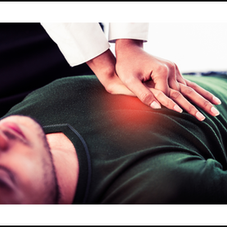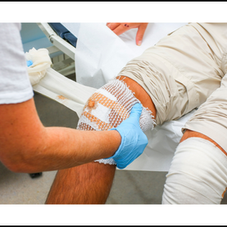Colostomy Nursing Care
• Assess the location of the stoma and the type of colostomy performed. Stoma location is an indicator of the section of bowel in which it is located and a predictor of the type of fecal drainage to expect.
• Assess stoma appearance and surrounding skin condition frequently. Assessment of stoma and skin condition is particularly important in the early postoperative period, when complications are most likely to occur and most treatable.
• Position a collection bag or drainable pouch over the stoma. Initial drainage may contain more mucus and serosanguineous fluid than fecal material. As the bowel starts to resume function, drainage becomes fecal in nature. The consistency of drainage depends on the stoma location in the bowel.
• In ordered irrigate the colostomy, instilling water into the colon similar to an enema procedure. The water stimulates the colon to empty.
• When a colostomy irrigation is ordered for a client with a double-barrel or loop colostomy, irrigate the proximal stoma. Digital assessment of the bowel direction from the stoma can assist in determining which is the proximal stoma. The distal bowel carries no fecal contents and does not need irrigation. It may be irrigated for cleansing just prior to reanastomosis.
• Empty a drainable pouch or replace the colostomy bag as needed or when it is no more than one-third full. If the pouch is allowed to over fill, its weight may impair the seal and cause leakage.

• Provide stomal and skin care for the client with a colostomy as for the client with an ileostomy. Good skin and stoma care is important to maintain skin integrity and function as the first line of defense against infection.
• Use caulking agents, such as Stomahesive or karaya paste, and a skin barrier wafer as needed to maintain a secure ostomy pouch. This may be particularly important for the client with a loop colostomy. The main challenge for a client with a transverse loop colostomy is to maintain a secure ostomy pouch over the plastic bridge.
• A small needle hole high on the colostomy pouch will allow flatus to escape. This hole may be closed with a Band-Aid and opened only while the client is in the bathroom for odor control. Ostomy bags may “balloon” out, disrupting the skin seal, if excess gas collects.
CLIENT AND FAMILY TEACHING
• Prior to discharge, provide written, verbal, and psychomotor instruction on colostomy care, pouch management, skin care, and irrigation for the client. Whether the colostomy is temporary or permanent, the client will be responsible for its management. Good understanding of procedures and care enhances the ability to provide self-care, as well as self-esteem and control. • Allow ample time for the client (and family, if necessary) to practice changing the pouch, either on the client or a model. Practice of psychomotor skills improves learning and confidence.
• If an abdominoperineal resection has been performed, emphasize the importance of using no rectal suppositories, rectal temperatures, or enemas. Suggest that the client carry medical identification or a MedicAlert tag or bracelet. These, measures are important to prevent trauma to the tissues when the rectum has been removed.
• The diet for a client with a colostomy is individualized and may require no alteration from that consumed preoperatively. Dietary teaching should, however, include information on foods that cause stool odor and gas and foods that thicken and loosen stools. Foods that cause these effects on ostomy output are listed below.
Foods That Increase Stool Odor
• Asparagus • Fish • Beans • Garlic • Cabbage • Onions • Eggs • Some spices
Foods That Increase Intestinal Gas
• Beer • Cucumbers • Broccoli • Dairy products • Brussels sprouts • Dried beans • Cabbage • Peas • Carbonated drinks • Radishes • Cauliflower • Spinach • Corn
Foods That Thicken Stools
• Applesauce • Pasta • Bananas • Pretzels • Bread • Rice • Cheese • Tapioca • Yogurt • Creamy peanut butter
Foods That Loosen Stools
• Chocolate • Highly spiced foods • Dried beans • Leafy green vegetables • Fried foods • Raw fruits and juices • Greasy foods • Raw vegetables
Foods That Color Stools
• Beets • Red gelatin
Reference:
Information retrieved from: http://wps.prenhall.com/wps/media/objects/737/755395/colostomy.pdf
To pass your Ordre des infirmières et infirmiers du Québec OIIQ-RN Exam go to: www.rn101questionbank.com
To pass your Ordre des infirmières et infirmiers auxiliaires du Québec OIIAQ-LPN Exam go to: www.rn101lpnquestionbank.com
Follow us on Instagram for more free nursing materials: https://www.instagram.com/jimbriant/




















